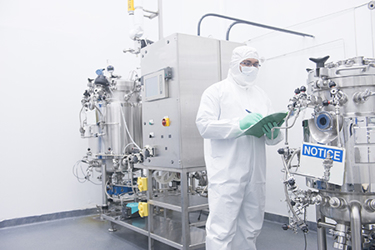Maintaining CQA's As Manufacturing Process Scale From 2D to 3D

Since 2011, clinical translation centers and biotech companies in more than 60 countries have posted over 1,500 clinical trials to investigate the use of human mesenchymal stem/stromal cells (hMSCs) for regenerative medicine. Nevertheless, there remains a critical need for economical biomanufacturing processes able to generate billions to trillions of cells per manufacturing lot to support the demand of future commercial applications [1]. Conventional large-scale hMSC manufacturing involves two-dimensional (2D) monolayer cell expansion in multi-layer vessels; however, scaling this bioprocess presents labor and cost challenges [2].
In a previous RoosterBio Blog, Building Effective Multi-Year Process Development Programs: Evolution of Technology Platform Decisions Based on Lot Size, Dr. Lembong and Dr. Rowley considered how three-dimensional (3D) microcarrier suspension bioreactor systems provide a promising alternative method to scale-up hMSC production [3]. As the hMSC manufacturing process is scaled from 2D to 3D bioreactor culture, it is imperative to maintain comparable critical quality attributes (CQAs) to reduce risks of costly failures of mid-to-late Phase trials, which Dr. Mark F. Witcher discussed in “Why Controlling CQAs Isn’t Good Enough For Cell & Gene Therapies” [4]. In our preceding blog posts [5, 6, 7], we assessed hMSC CQAs (i.e., adherence to plastic, cell surface marker expression, trilineage differentiation) and cellular functional attributes (i.e., expansion potential, angiogenic cytokine secretion, immunomodulatory activity) against the critical process parameters (CPPs) we use to control for them. In this post, we return to discuss CPPs that may be utilized to control for CQAs in 3D bioreactor systems. In addition, we note the comparability of CQAs and functional attributes between hMSCs manufactured in 2D planar culture vs. 3D bioreactor culture.
Get unlimited access to:
Enter your credentials below to log in. Not yet a member of Cell & Gene? Subscribe today.
